Key Research Insight
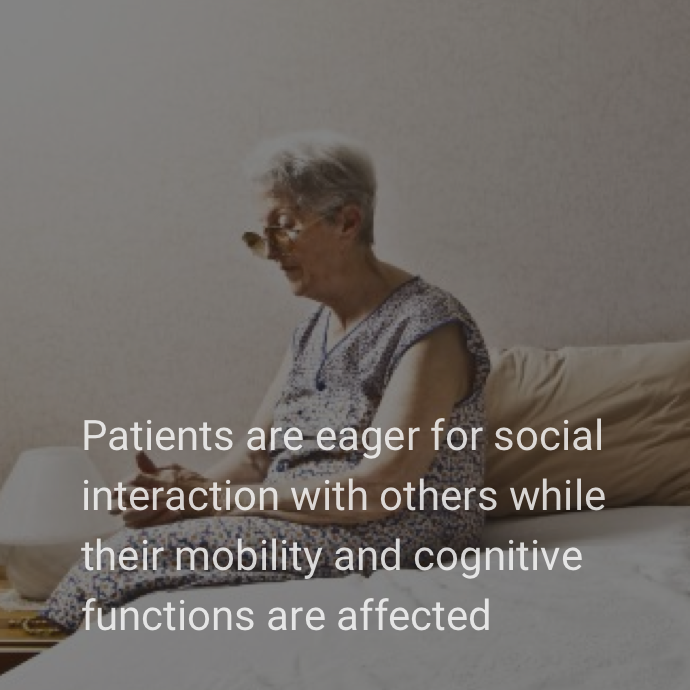
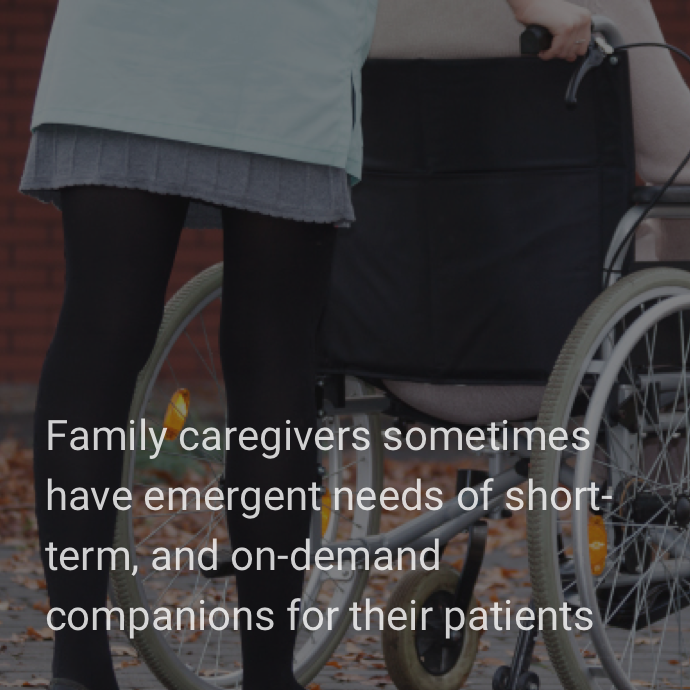
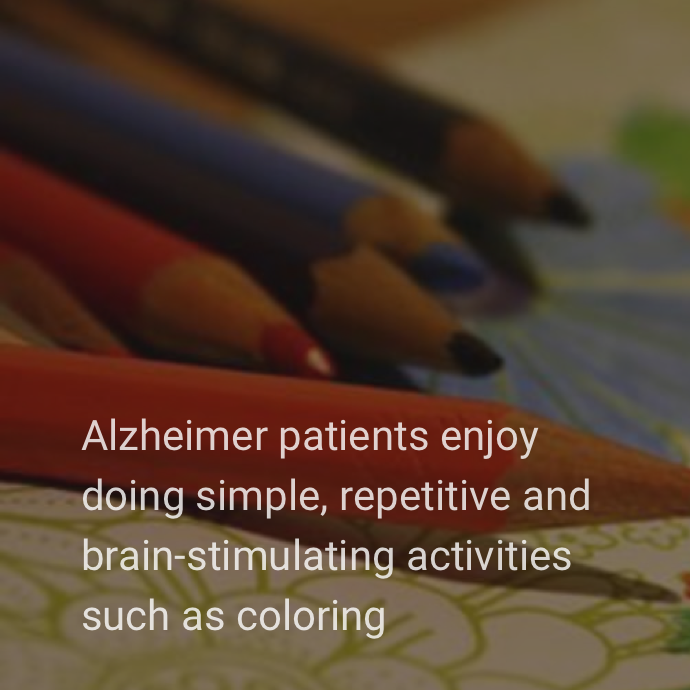
An on-demand, short-term & remote companion service for patients with Alzheimer's disease.
The caregivers of the patients with dementia is experiencing high level of stress with little chance to take a break. TouchIn is a system that aims to provide a short-term companion to the patients and allow the caregivers to have brief respites.
Interview LeadUX Researcher
Interview Affinity Diagraming Prototyping Usability Testing
More than five millions of elderly people in the U.S. live with Alzheimer's disease (AD). These patients require long-term and continuing care. The intensive caregiving process brings a lot of stress to the caregivers and gradually compromises the quality of life of the whole family. While most assistant technologies are focusing on the patients, the stress of the caregivers is relatively under-addressed. Our team wanted to create a solution that can lessen the burden of the caregivers while still providing enough cognitive stimulations to the patients with AD.




TouchIn is an on-demand, short-term & remote companion service for Alzheimer patients. Through remote caregivers and guided coloring activities, it brings warm friendship and creative expression to patients’ live, thus improving the wellbeing of patients.
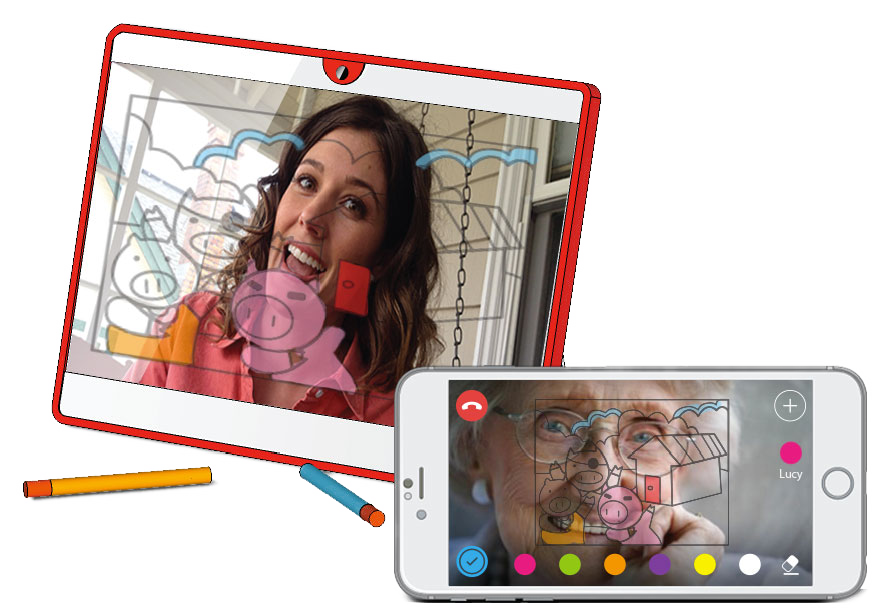



A platform that brings uncostly remote companion to Alzheimer patients
Allow patients to have regular social interaction while their mobiliy decreased
Improve the wellbeing of patients via creative coloring activities

The restricted understanding of what the life of people with AD looks like urged us to interact directly with the patients and their families. We did six -hour interviews with four caregivers and patients. Our interviews revealed several insights:
Caregivers were under big stress, and had to give up their original job and social life. “I couldn’t pursue my career, I couldn’t pursue friends and things...but I have my own life.”
Alzheimer's patients were eager for social interaction but facing many challenges. “He enjoys being out where other people are, but he cannot understand what's going on.”
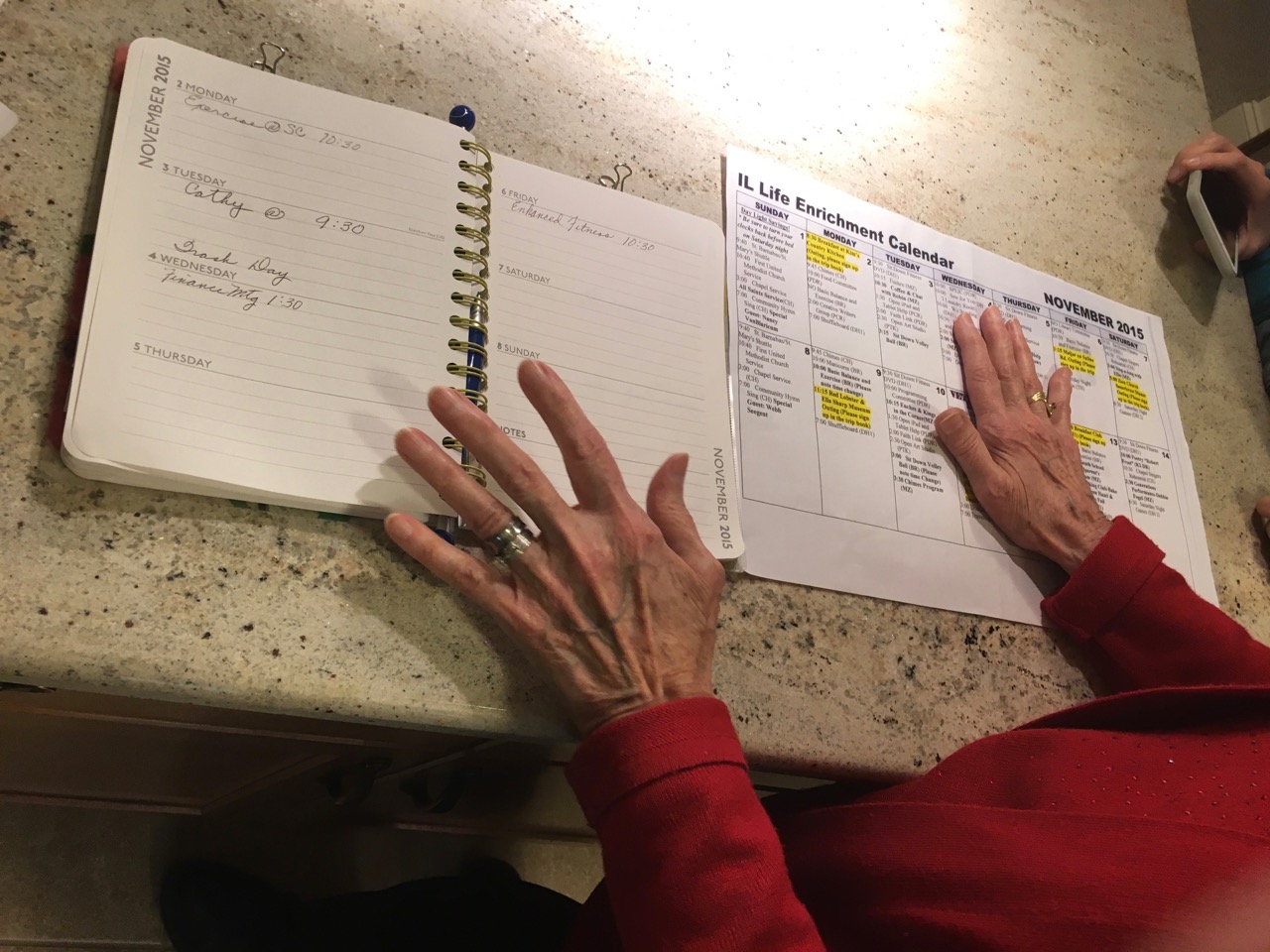
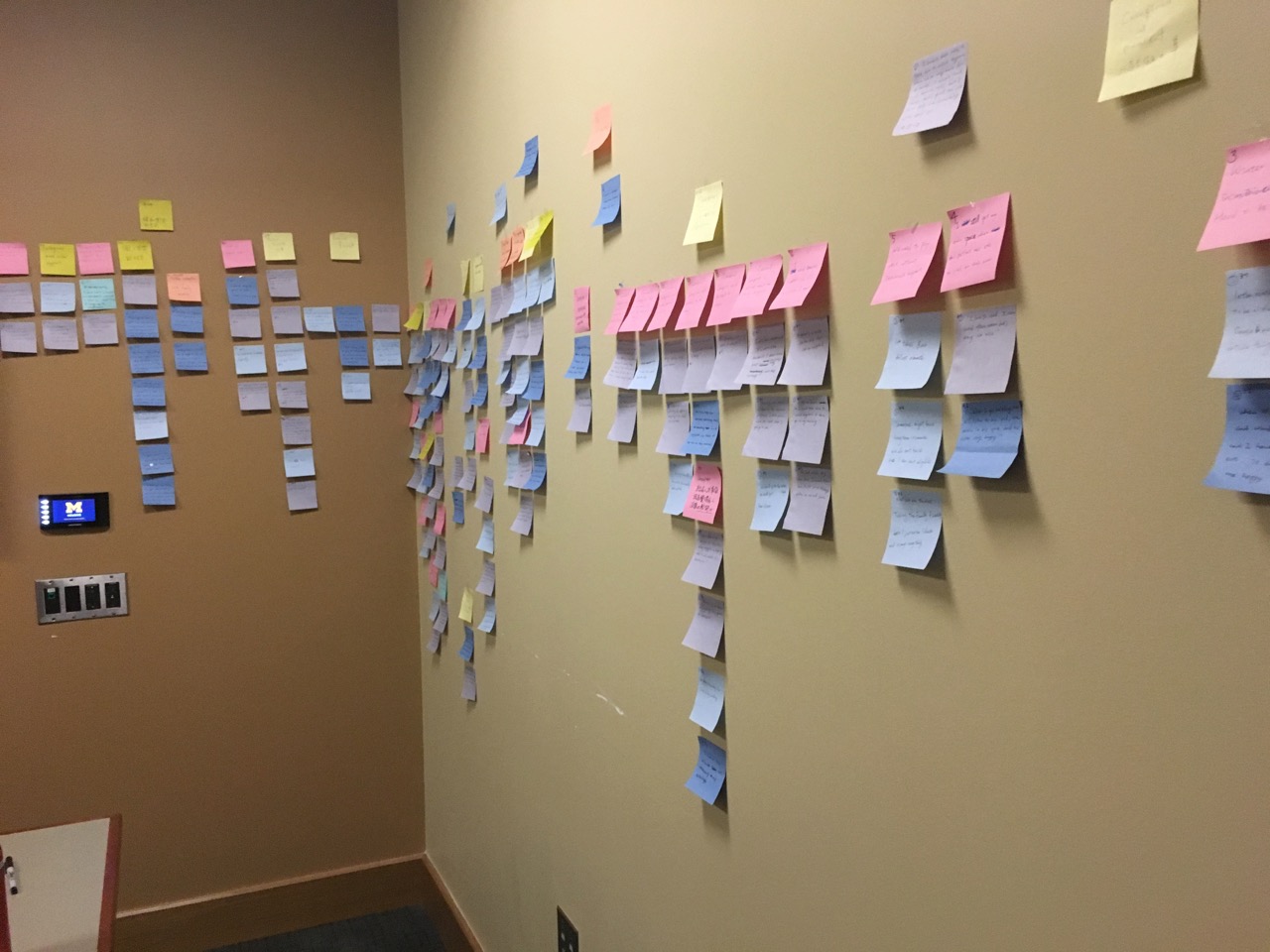
Based on the previous finding, we aimed to design a tool that can lower caregivers’ burden and increase patients’ social interaction. Our proposal is an on-demand caregiver-sourcing: a platform that provides short-term and remote caregivers to patients with Alzheimer’s disease.
A subsequent issue would be determining the activities suitable for these remote caregivers during their companion with the patients. I explored the online forums and analyzed the activities mentioned to be good for people with AD. I categorized the activities into three main categories:
1. The activity should be simple without complicated planning, such as watching a therapy dog.
2. The activity should be predictable, such as interacting with a speaking toy that repeats what it receives.
3. The activity should be creative and stimulating to patients, such as coloring or jigsaw.
Based on these findings, we refined our solution to be an interactive tablet with guided drawing app that can be connected to the short-term remote caregivers that will facilitate the coloring activities.
Our first prototype is a system containing a video camera, a screen that shows the remote caregiver and an application on the ipad for patients to color pictures.
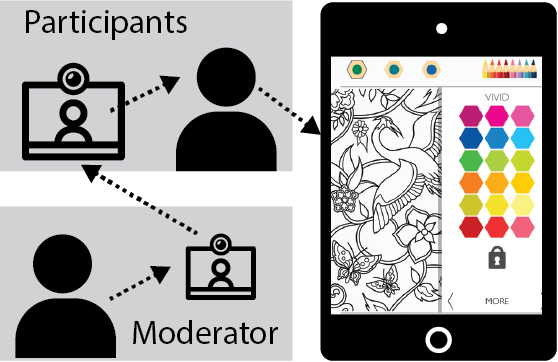
1. Participants had difficulties in learning how to use the interface.
2. Participants showed an interest to interact with people in the screen after a warm-up session.
3. Attention shifting between the iPad screen and the laptop screen might be overloading.
The challenges of our participants were mostly due to the unfamiliarity with the technology and a constant requirement of attention shift between different screens. Therefore, we put all our interfaces into a single screen. It also provided an experience close to face-to-face interaction.
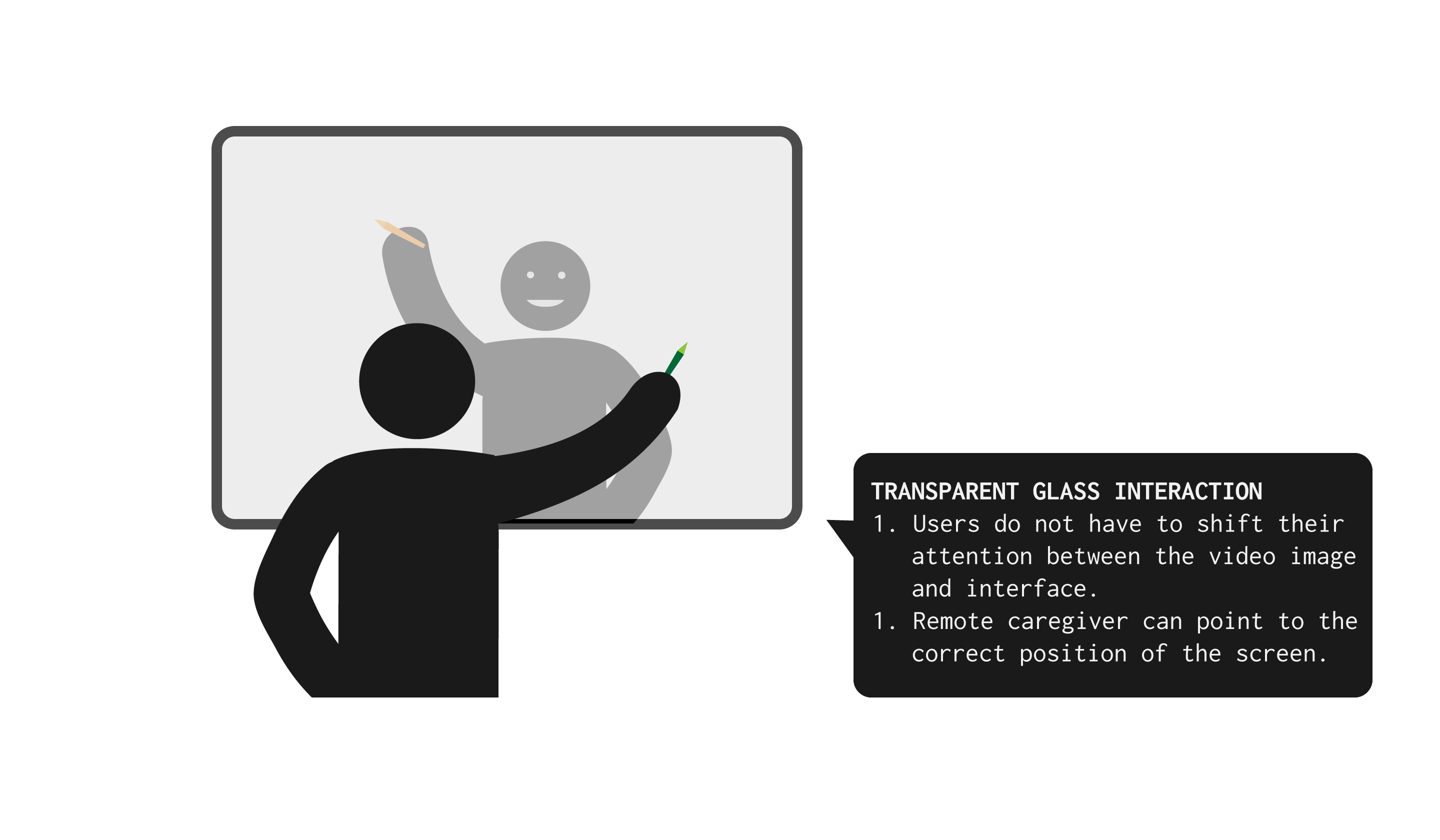
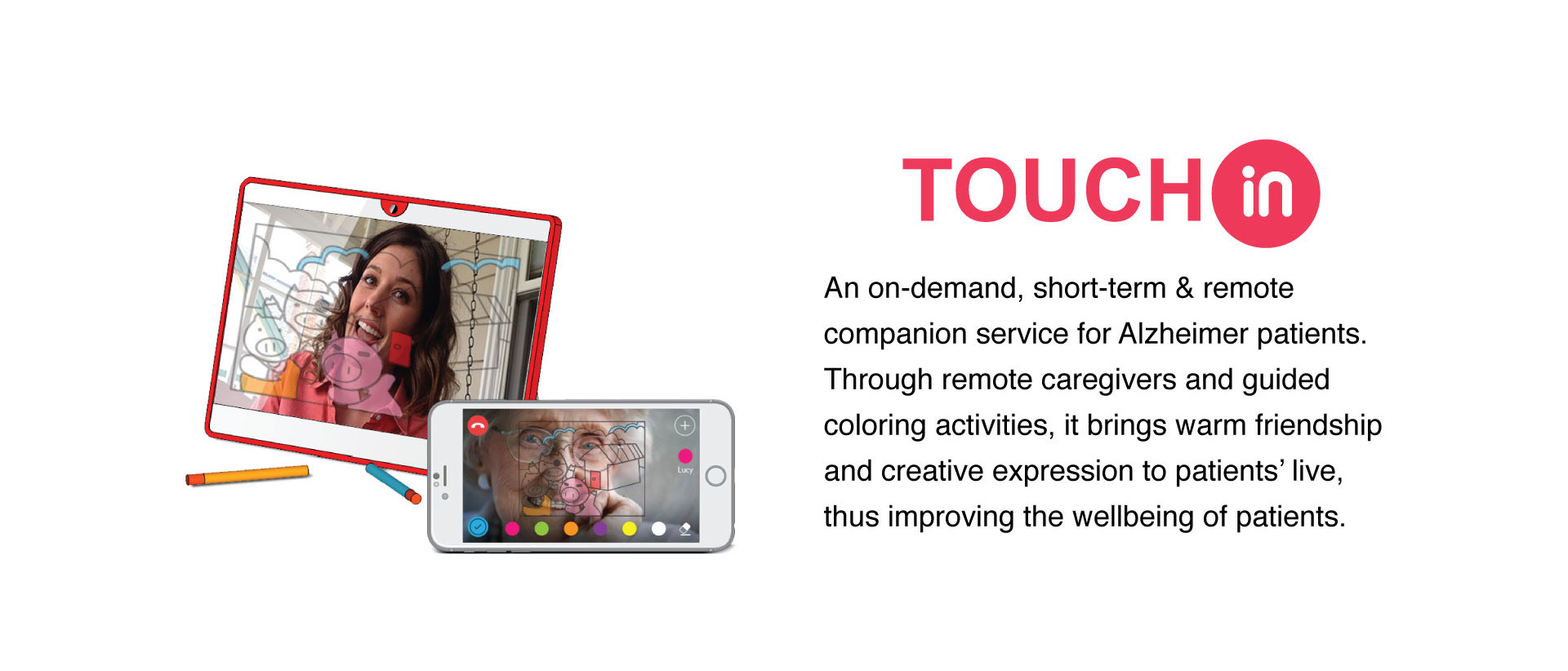
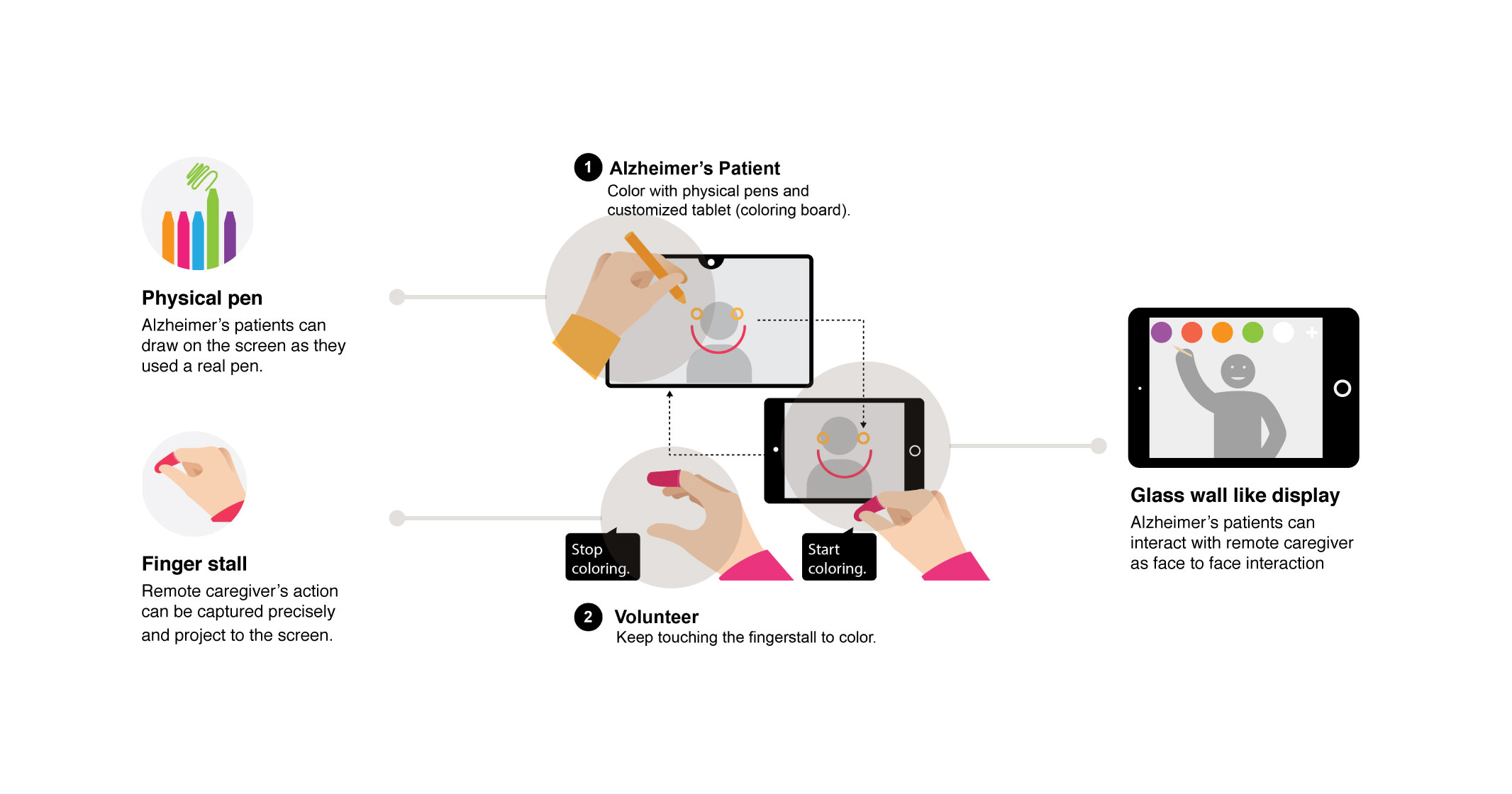
One of the feedback we recieved was that "if you have such a interesting interface, why only let the Alzheimer's patients color?" We have thought about different activities before. However, we decided to focus on coloring first because it is an common activity that fulfills all the criteria we found in our research and observation. Although we only focused on the coloring task in this project, we expected that our design could act as an interface for different kinds of activities. We hope that through our design, technology is no longer an obscure puzzle to the people with Alzheimer’s disease, but serves as an approach to connect with the outer world.